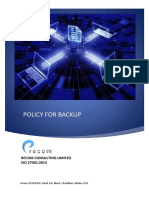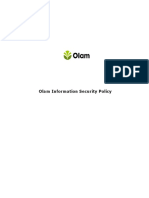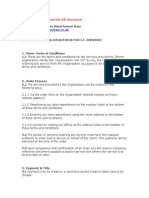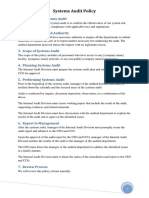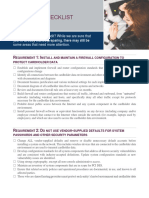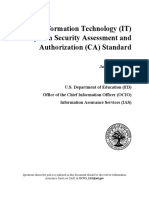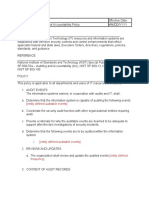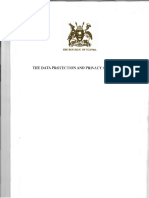100% found this document useful (1 vote)
232 views6 pages7 - Data Backup Policy
This policy defines procedures to safeguard data backups and minimize business interruption from data loss. It sets guidelines for prioritizing backups, frequency, retention, storage, encryption, access controls, testing, recovery procedures, monitoring, documentation, training, and compliance requirements. The policy applies to employees, contractors, locations, resources, and transmitted information. Exceptions require approval.
Uploaded by
pentesting.443Copyright
© © All Rights Reserved
We take content rights seriously. If you suspect this is your content, claim it here.
Available Formats
Download as DOCX, PDF, TXT or read online on Scribd
100% found this document useful (1 vote)
232 views6 pages7 - Data Backup Policy
This policy defines procedures to safeguard data backups and minimize business interruption from data loss. It sets guidelines for prioritizing backups, frequency, retention, storage, encryption, access controls, testing, recovery procedures, monitoring, documentation, training, and compliance requirements. The policy applies to employees, contractors, locations, resources, and transmitted information. Exceptions require approval.
Uploaded by
pentesting.443Copyright
© © All Rights Reserved
We take content rights seriously. If you suspect this is your content, claim it here.
Available Formats
Download as DOCX, PDF, TXT or read online on Scribd
/ 6



